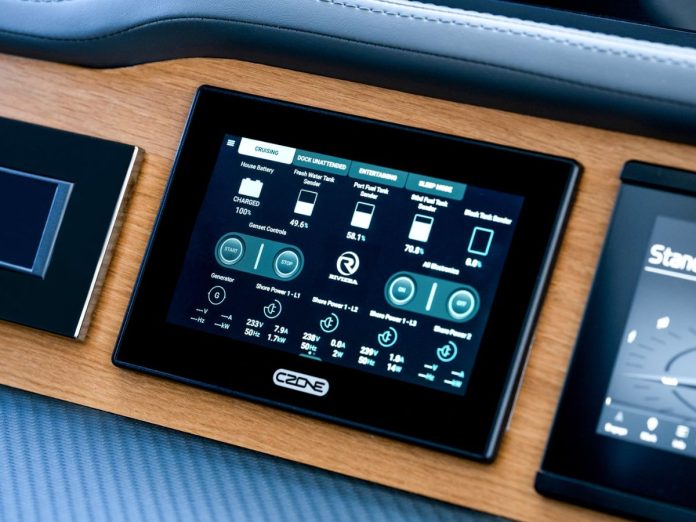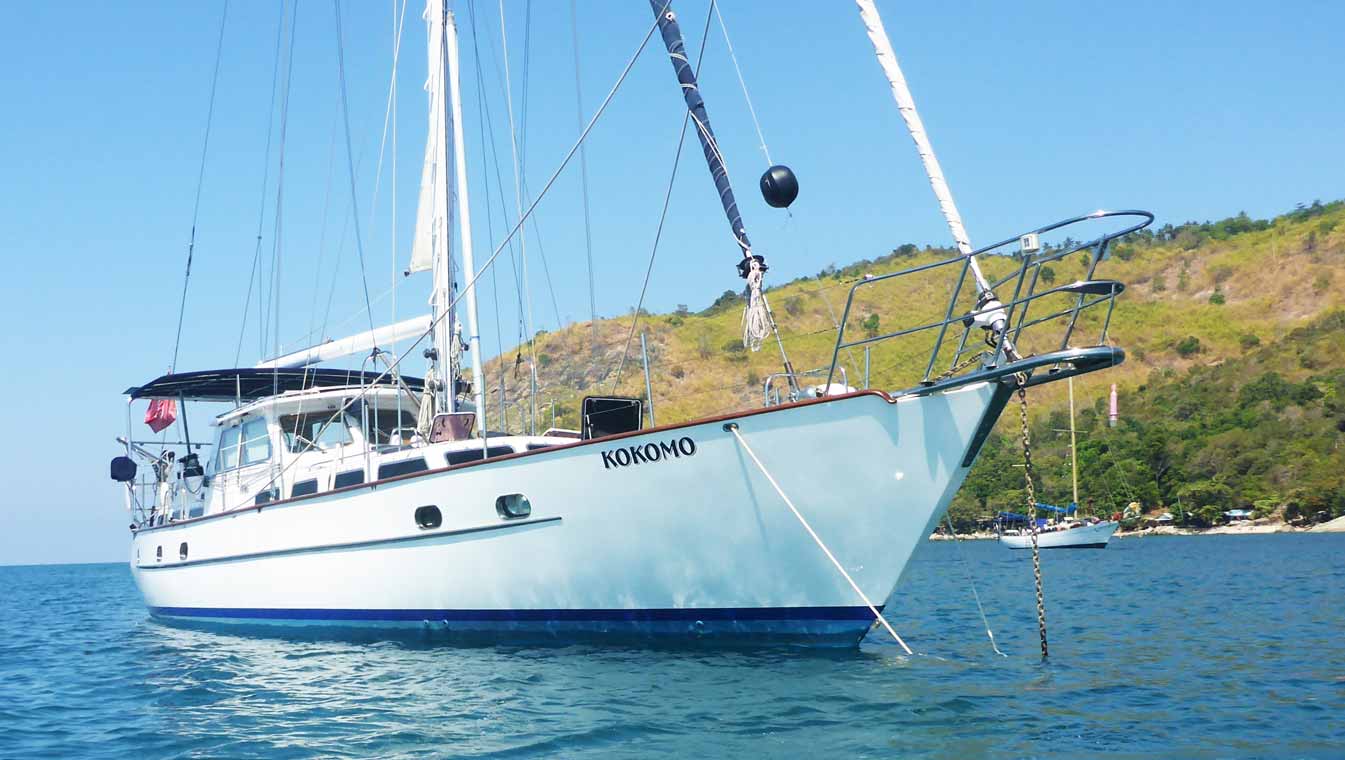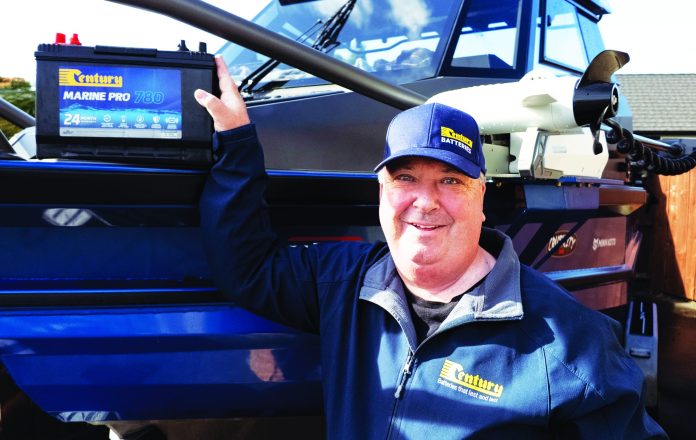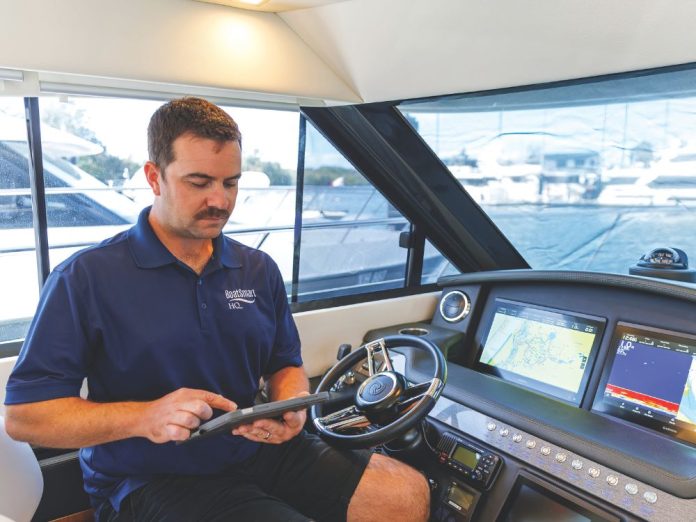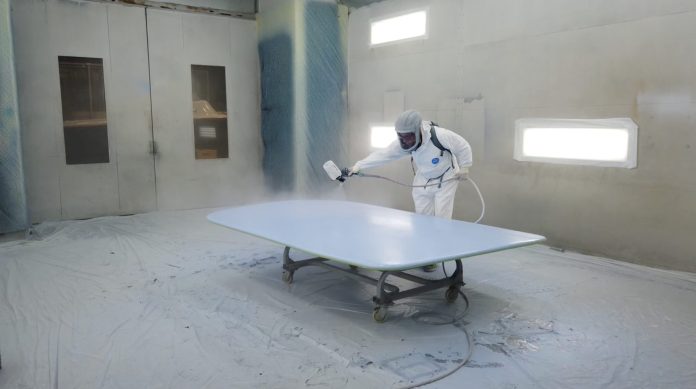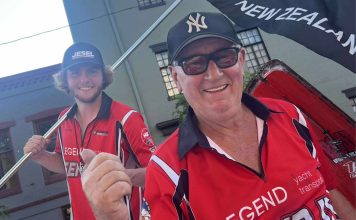A healthy electrical system is one of the most important contributors to a safe and enjoyable time aboard any modern motor yacht. Whether you’re cruising coastal waters or anchoring off-grid for days at a time, understanding how your onboard power works—and how to manage it—is essential.
Riviera’s Electrical Design Manager, Matt Weetman, offers expert insights into how Riviera owners—and those with similar high-spec vessels—can get the most out of their yacht’s electrical systems.
Why power management matters
As soon as you leave your marina berth, you’re off-grid. Most boaters instinctively check fuel, water and provisions before departure—but power management is just as crucial.
Your house batteries run vital onboard systems such as lighting, refrigeration, navigation electronics and entertainment. If not properly managed, a power shortage can affect comfort and safety. Fortunately, vessels like Riviera yachts are equipped with integrated systems such as CZone to help monitor and control onboard power usage.
According to Matt, the best way to manage onboard power is to develop a solid working knowledge of the systems your yacht provides:
“There are three primary power sources aboard—batteries, the generator, and shore power—and three transfer systems to distribute that power efficiently. The more familiar you are with these, the more self-sufficient and confident you’ll feel during extended stays aboard.”
Matt’s top power management tips
- Monitor your house batteries regularly—ideally every hour, even when charging.
- Use your inverter sparingly—it can draw more from the batteries than expected.
- Ensure batteries are fully charged before turning in for the night.
- Operate AC systems via shore power or generator about 50% of the day, in four-hour minimum blocks to maintain healthy battery cycles.
- Schedule an annual check-up—a specialist marine electrician should inspect battery health and connections at least once a year.
The three main power sources on board
1. Battery bank (DC power)
This is the heart of your yacht’s off-grid capability. House batteries run lighting, fridges, navigation systems and other day-to-day comforts. CZone or equivalent monitoring systems display real-time State of Charge (SOC) and indicate whether you are charging or discharging. Understanding how your usage affects these levels is critical to managing onboard life.
2. Generator (AC power on demand)
Think of your generator as a mobile power station. It supplies alternating current (AC) for high-load systems like air conditioning, electric cooking, and charging stations, while also powering your onboard battery chargers.
3. Shore power
When moored, always plug into shore power. While shore power capacity varies by marina, it typically offers enough load to run all domestic systems and recharge batteries without draining reserves.
Power transfer and distribution systems
Inverter system
The inverter converts DC battery power into AC power for specific systems like entertainment, icemakers, and select outlets. These are chosen for convenience but must be used judiciously, as they place a heavy load on the house batteries.
Charging systems: battery chargers and alternators
Battery chargers use AC power from shore or the generator to top up batteries and support electrical loads. Alternators, powered by the engines, also contribute to charging battery banks—usually with one alternator dedicated to each major battery system. Running the engines can replenish DC power, but if other systems (like fridges or entertainment) are drawing current, full recharge may take longer.
Battery paralleling
As a failsafe, the battery parallel function allows power to be temporarily transferred between banks—for instance, to start a generator or energise navigation electronics in an emergency. It’s not for everyday use but a vital backup.
Practical reminders
- Once at anchor, your engines stop providing power. This shifts the entire load to your batteries and inverter unless you’re running a generator.
- CZone or similar monitoring systems will alert you when battery capacity drops below safe levels.
- Minimise inverted loads and unnecessary power draws (like frequent fridge access) during recharge cycles.
- Before bed, always check that the house batteries are fully topped up. Many yachts have a sleep mode feature that automatically reduces overnight power consumption.
A final word
With a little knowledge and careful monitoring, modern yachts—like Riviera’s range—make it easy to enjoy home-like comfort while cruising. Whether you’re a Riviera owner or managing power aboard another high-spec motor yacht, these principles remain the same: understand your system, monitor consumption, and maintain your batteries.
For specific details and maintenance guidelines, consult your owner’s manual or speak with your authorised dealer or marine technician.








